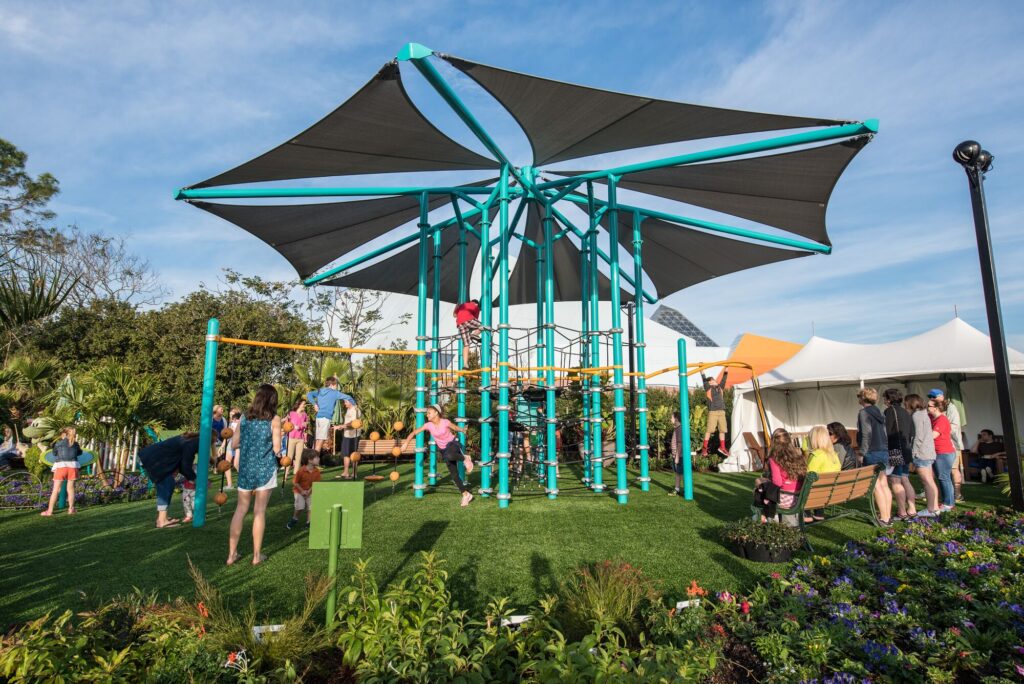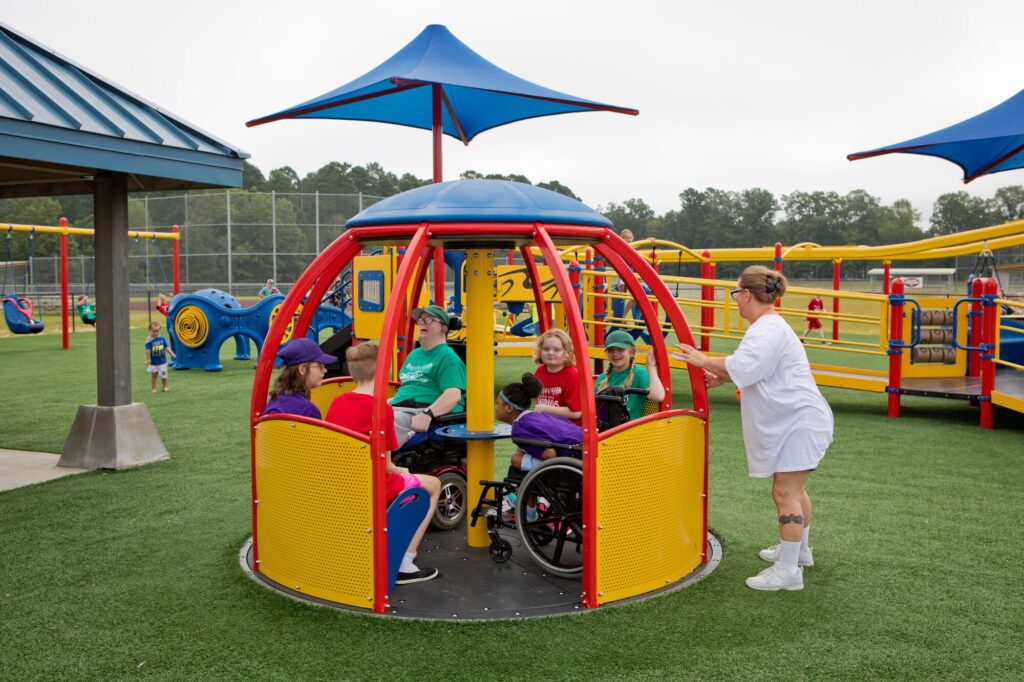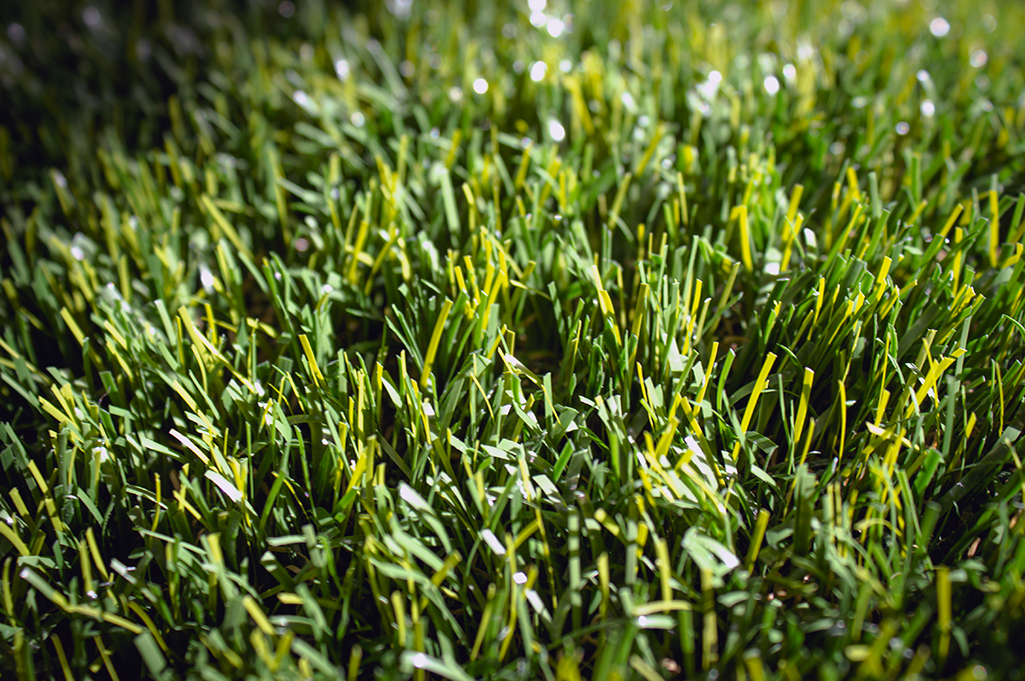Artificial Turf for Playgrounds – What are the Benefits?

by Sonya Wilson
Artificial turf for playgrounds is a fabulous surfacing option that is often overlooked. In this blog post, we will outline why you will want to consider artificial turf when designing your next play space.
Planning a playground is fun, isn’t it? Discovering all of the different components you can put together to create an awesome play space, choosing the colours that will work perfectly for the site, deciding on the ideal design that will wow the kids. Through this process, you’ve learned a lot about the different aspects of creating a playground that appeals to a diverse range of users. You’ve learned that a great playground will provide lots of opportunities for active play, imaginative play, group play, as well as spaces for quiet play. You are excited to get this playground into the ground and see all the kids playing on it for the first time!
But wait! There is still one very important thing you have to consider that will have an impact on the look, feel, and safety of your new playground – the surfacing. There are a number of options available for surfacing, including engineered wood fibre, poured rubber, rubber tiles, and artificial turf for playgrounds. What you decide to go with will be determined by what works best for the play space you have designed and your budget.

Artificial turf has been gaining popularity and is a fantastic option for a safe, practical, and natural looking playground surfacing. As far as price goes, it falls in between the other surfacing options.
Here are some reasons why artificial turf is surfacing worth considering:
- Accessibility – with a greater awareness of the importance of designing universally inclusive playgrounds, artificial turf provides a surface that is accessible for those using mobility devices.
- Drainage – no pooling of water. Artificial turf offers superior drainage.
- Maintenance – very little maintenance is required. Periodic brushing keeps the turf looking good and keeps the strands upright. Rain will rinse off any dust or pollen residues.
- Meets CSA fall height requirements by using foam pads of varying thicknesses under the turf while offering the look and feel of real grass.
- Reduces heat retention.
- Visually appealing for a play space.
- Can be used in combination with engineered wood fibre or rubber surfacing.
- Turf is inviting and comfortable to sit, lie, and play on.
- Adding turf onto play mounds/hills enhances the play space with varying terrain.
Artificial turf has come a long way from the AstroTurf of the ‘60s. It was originally made of short, tightly curled, nylon fibres woven into foam backing and it looked…fake. Today, artificial turf is typically made from polyethylene or polypropylene monofilament strands. The pile height can be up to 1.5 inches in height with synthetic thatch in varying shades of natural colours woven throughout the turf. This mimics the dry grass you see on lawns, making the turf appear more like real grass.

To keep the blades of artificial grass standing up, an infill is raked into it when it is installed. There are two types of infill that we offer with our turf: Zeolite and Envirofill. Which infill you decide to go with will depend on what time of year your project is being installed and your budget. You can discuss your choice further with your project consultant.
Zeolite
- Traditionally recommended for use in turf where pets will be toileting, as it captures and neutralizes the ammonia in pet urine which causes foul odours.
- Used in playground applications because the granules don’t compress easily so they keep the grass standing up nicely.
- Zeolite cannot be installed in wet conditions.
- Zeolite is less expensive than Envirofill.
Envirofill
- Looks like very tiny green balls and is extremely durable, keeping its shape even when being used on a busy playground.
- It has an antimicrobial coating which stops the growth of bacteria and combats odour.
- The rounded particles will not compact or migrate over time so there is no “tracking” of it on footwear.
- Envirofill is easier to install in wet conditions, so time of year is not as much of an issue.
- It is a little more expensive than Zeolite.
The choice of surfacing for your playground can be just as important as the choice of play equipment. From loose fill (like engineered wood fibre) to unitary surfacing (like poured rubber or turf), there are many options available with unique advantages depending on your play space. If you want to explore surfacing options for your playground, our team at Habitat Systems is more than happy to help.
Contact us today to get started!
